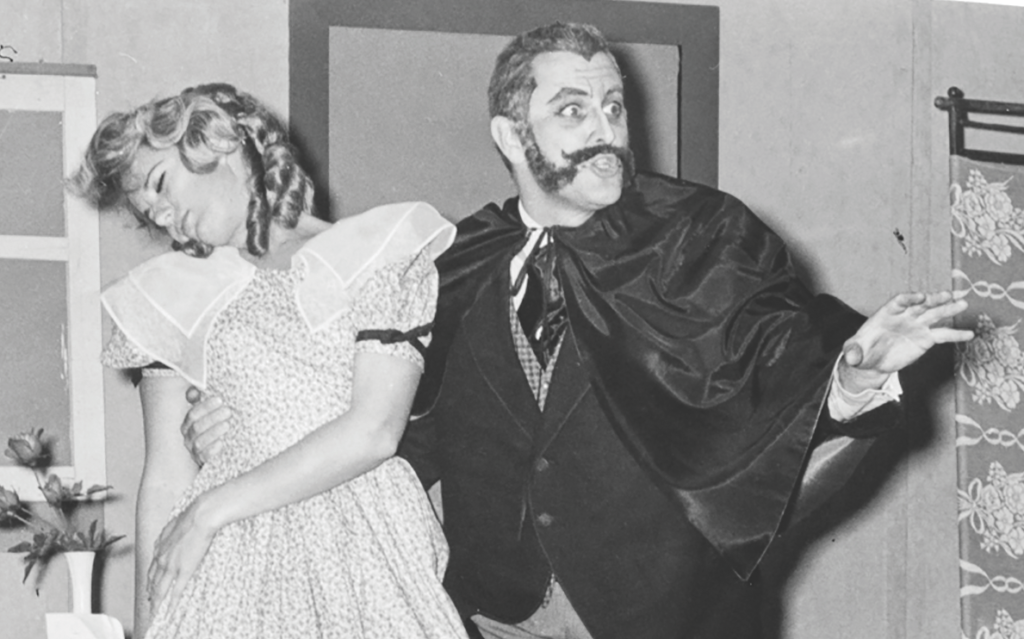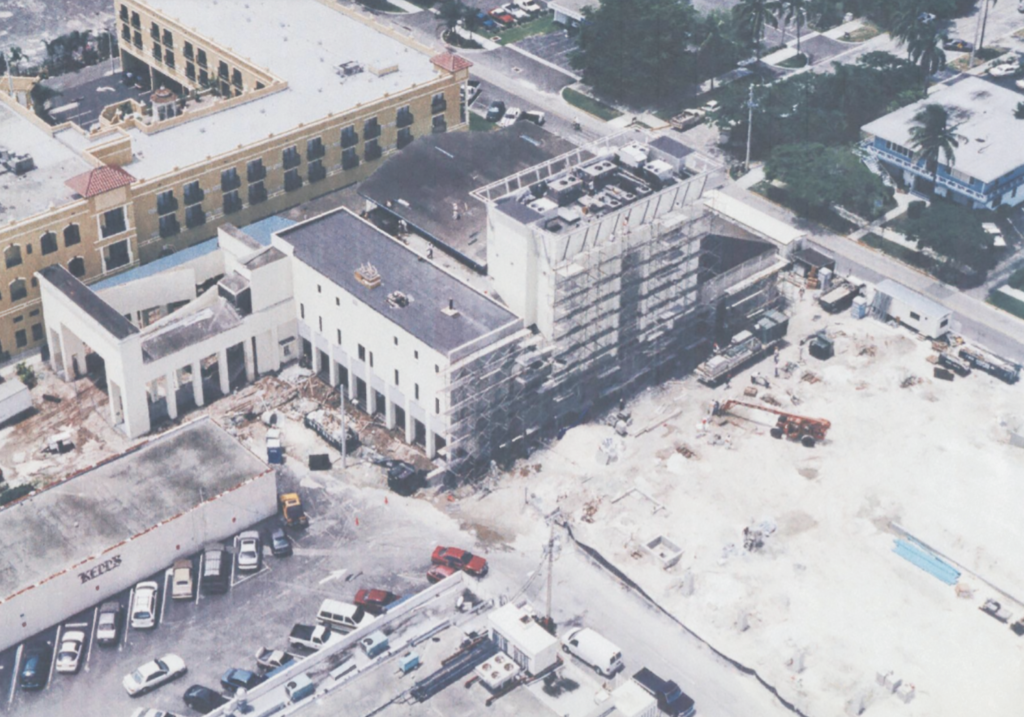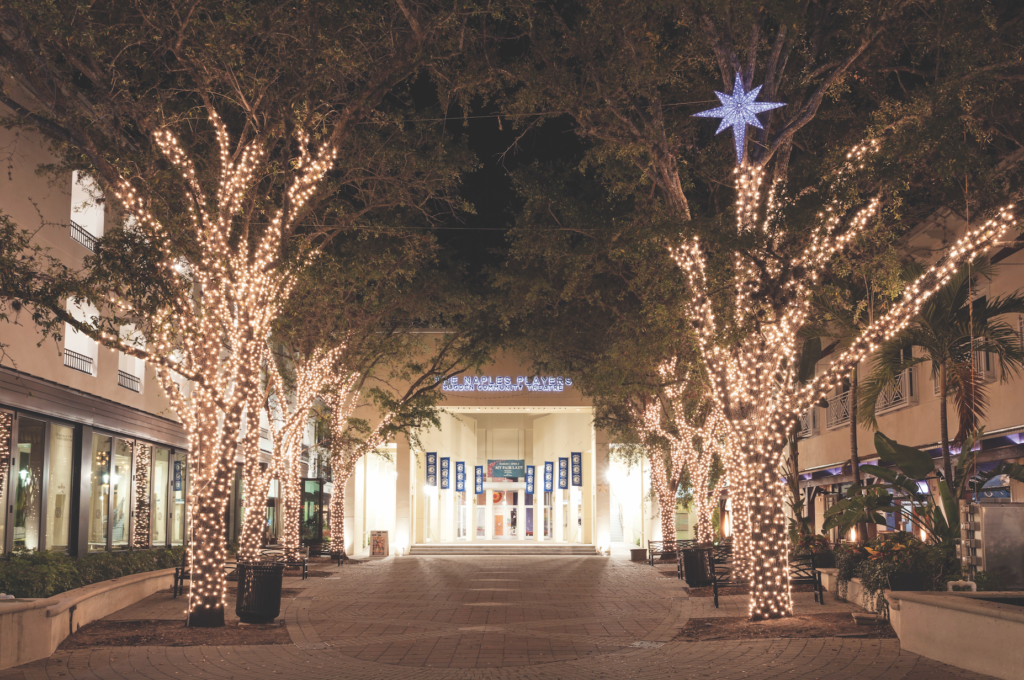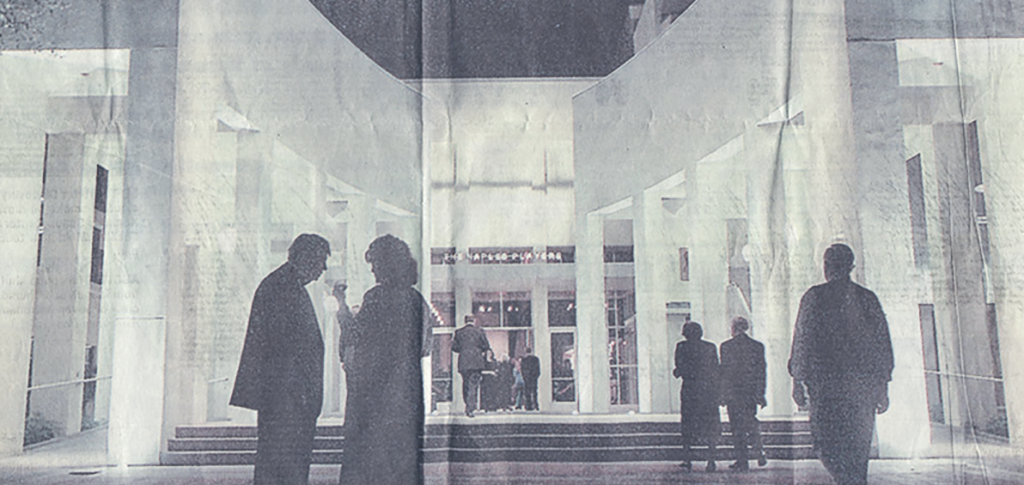During the holidays, the trees lining Sugden Plaza are wrapped in twinkling lights with illuminated stars hanging from branches above. A large Christmas tree decorates the front of the building, leading to the Sugden Community Theatre. Nestled in the heart of Fifth Avenue South, the scene is an anchor for the festivities that take place downtown throughout December.
Tourists, part-time residents and newcomers may see the landmark and think it’s quite old, a stately and elegant part of the Naples landscape. Longtime residents know that the theater, built in 1998, is young compared to the group that calls its walls home.
The Naples Players was founded in January of 1953, one year after the idea was born during a gathering at the home of Henry and Mary Watkins, the family name synonymous with the Naples Beach Hotel & Golf Club legacy. Mary was the first president of the Naples Junior Woman’s Club, which underwrote and helped build the sets for I Remember Mama, the first production for the Players. It was a one night only, sold-out show at Gulfview Middle School. Throughout the next two decades, The Naples Players’ reputation continued to grow.


Pat Ashton, a drama coach who relocated to Fort Myers to lead a new theater program for the Canterbury School, joined the troupe in 1976, around the same time that The Naples Players opened its first location, a 40-seat playhouse on Davis Boulevard. The space was small, and most of the productions continued taking place in churches and high school auditoriums. Ashton was involved with the troupe for decades, serving as president for multiple terms and directing and acting in more than 70 productions. He was also the membership head of the building committee for the Sugden Community Theatre.

By the 1990s, The Naples Players had outgrown the Kon-Tiki movie theater, which had been its home since 1985. The need for a new location coincided with an economic boom and the transformation of the fashionable Fifth Avenue South district, which was led by Andrés Duany, a renowned urban planner. Duany pointed out that a primary challenge for the area is that there was no reason for people to go to downtown Naples, explains Bryce Alexander, CEO and artistic director of The Naples Players. “His solution was to bring arts and culture downtown.”
The timing was serendipitous. The Naples Players were already fundraising for a theater, and the revitalization of Fifth Avenue brought a tremendous offer—the McCabe and Wynn families would donate land for the theater’s location. Herbert and Peg Sugden came in early on, too, and met with Ted Tobye, the president at the time. The Sugdens offered a $500,000 donation in exchange for naming rights. “Ted had the foresight to not even bat an eyelash and said, ‘No, but for a million …’ and that is how the name came to be,” Ashton says.
Naples-based architect Andrea Clark Brown worked with the troupe to ensure that the theater was state-of-the-art and comfortable for its audience. A rarity for a theater, the space was conceived with input from actors. “We visited other theaters, sat in the seats and told the designer what we wanted,” Ashton says. The wish list included adding 24-inch seats instead of the standard 21, adding more walking space between rows of seats, and having no center aisle, which he notes “loses the best seats in the house.” It’s also why the theater has more stalls in the women’s restroom, a point Ashton said they fought for because they knew the majority of their audience were women.

When the theater opened in 1998, it marked the beginning of the new foundation of Naples, Alexander says. “And it’s only grown since,” he adds. That growth includes serving over 60,000 patrons a year through 15 major productions, an ever-growing education program and community programs that promote wellness through the arts, including improv workshops to help adults deal with anxiety about COVID-19.
Since the pandemic started, The Naples Players has been among the most innovative and proactive groups in adapting to meet the challenges by offering virtual classes and outdoor performances.
COVID-19 restrictions will also change holiday celebrations, such as the annual tree lighting event in Sugden Plaza. In addition to returning with A Tuba Christmas, a more than 20-year-old tradition, the group plans to debut a new event in partnership with The Spice & Tea Exchange of Naples: the Trees & Teas Festival, in which socially-distanced guests stroll and sip tea and hot chocolate while perusing Broadway-themed trees decorated by local designers. “The theater has always been part of the fabric of creating a destination people want to be part of,” Alexander says.
Ashton echoes the sentiment: “It still feels like family, even though it is so much bigger than it was years ago. I have such pride in how it’s grown and the quality of the theater.”








